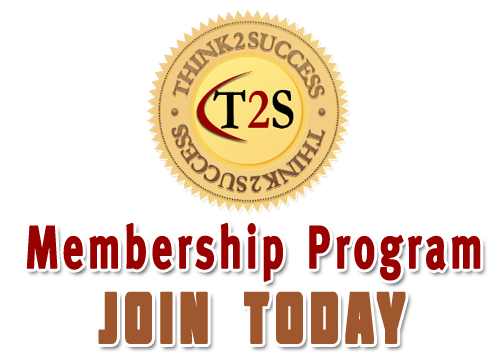
When managers use 5 specific approaches, they add value to their people so their people can multiply the value of the organization.
 Say the following sentence out loud – “The majority of managers are producing half-fast results.”
Say the following sentence out loud – “The majority of managers are producing half-fast results.”
That just sounds funny because of the clever play on words used in Verizon’s viral, attention-grabbing “half-fast” ad campaign, and yet it is true. The overwhelming majority of managers are unknowingly diminishing the output of their teams by 50%+ because they’re not doing some very basic managerial duties.
You be the judge. How effective are your managers in using these 5 approaches?
1. Employees work in their areas of strength at least 70% of the time
We’ve all been there. The employee responsible for providing customer service appears unhappy, disinterested, and lacking the communication and empathy skills needed for the job. If happily and efficiently solving peoples’ problems is not a staff member’s strengths, why place him in roles that make him the face of your company? Unfortunately that’s an all-to-common example of a manager prioritizing a job task over a person’s strengths and areas of giftedness. In an increasingly knowledge-driven economy, strength / task alignment is the competitive edge. The problem is two-fold. First, most managers don’t know what their employees’ strengths are. Second, most managers are using outdated management practices from the manufacturing era that forces their employees to complete a majority of tasks they are simply not well suited for. That’s a half-fast approach that inevitably weakens employee engagement and annihilates already-thin profit margins. Solve for this by equipping managers with the tools such as Gallup’s StrenghtsFinder 2.0 to identify an employee’s strengths and then aligning job tasks with the person best suited to complete it. Sure it’s a radical approach. It’s also a winning approach.
2. Employee development plans focus on building upon their strengths, not their weaknesses
In old school performance management models that are widely used, managers are still taught to focus on an employee’s areas of weakness with the fervor of a shark attack. That’s a highly motivating conversation, isn’t it? It’s also a half-fast approach in that the employee’s greatest potential for growth lies in working in their areas of strengths. Ah, but change is coming. Millennials demand individualized feedback and targeted discussions. The authors of Leadership 2030 identify individualization as one of six mega-trends transforming business. They go on to say, “A new breed of leaders will be needed to engage diverse and highly individualized teams. The key will be to provide autonomy within a clear set of boundaries, to foster the conditions for people to perform.” Millennials are driving this mega-trend, and if a manager wants to maximize results, s/he will stop using half-fast approaches and become masters at crafting development plans and discussions solely around strengths.
3. Employees know exactly what they need to do to get promoted
Here’s a wager for you – for roles paying $30,000 or more annually, I bet the majority of managers in your organization cannot easily and accurately explain exactly what an employee must do in order to get promoted. I’ll double the bet by adding that most development plan and annual performance review discussions do not include that information as well. That’s a half-fast approach to retention because it doesn’t take long for employees to become disenchanted with the lack of clarity in career planning. Furthermore, most managers avoid having any form of long-term career planning discussions with their employees because they fear losing them, especially when replacing staff can be very difficult. The short-term impact is an obliteration of discretionary effort from all employees. The long term impact is a high voluntary attrition rate among your best employees. Managers who deliver maximum results are great at helping their staff plot out their future because they know making a vision of the future plausible is the best way to connect and build loyalty in the present.
4. Employees work in a high growth environment
Managers are major contributors to their local work environments. Growth is the great differentiator, and the only way a person can grow is to be in an environment where she is kept in her strengths zone and stretched out of her comfort zone. According to leadership guru John Maxwell, a high growth environment has these 10 characteristics:
- Employees have others ahead of them
- Employees are continually challenged
- Employee focus is forward
- The atmosphere is affirming
- Employees are often out of their comfort zone
- Employees come to work excited
- Failure is not the enemy
- Others are growing
- People desire change
- Growth is modeled and expected
Don’t be misled by incorrect conventional thinking that top management is responsible for the organizational culture. Work environments are created and sustained by local management, and too many of them are using half-fast approaches to maintain command and control. Managers who truly maximize results are those who trade control for contribution. And that creates a high growth environment.
5. Managers spend the time required coaching their employees
As I mentioned in The Astonishingly Simple Secret of Effective Coaching, coaching is the most under-utilized managerial skill and research bears this out. A McLean & Company survey found that 68% of managers rate themselves “high” on coaching ability of direct reports, but only 32% of employees agree. Most managers fall short on coaching primarily due to a maddening focus on productivity at the expense of investing time to develop their direct reports. Let’s be candid – failing to coach employees is the greatest half-fast approach of all. I shared some great tips for simplifying the coaching process in the article mentioned above. Those who adopt those practices will see real tangible results in no time.
When managers use these 5 approaches, their organizations will be on the right track to getting out of the half-fast lane and moving into the high operational value (HOV) lane. It’s the little shift with a big impact!
For more tips and strategies on producing more than half-fast results, subscribe to this blog, and follow me on social media (Twitter, LinkedIn, YouTube, and Facebook). By doing so, you will gain access to leading edge research on managing for excellence. You will also have access to daily inspirational and motivational quotes that will drive your success trajectory upward. So don’t delay, follow me and think yourself to success t


